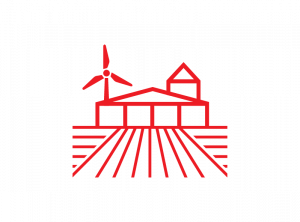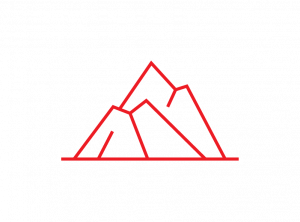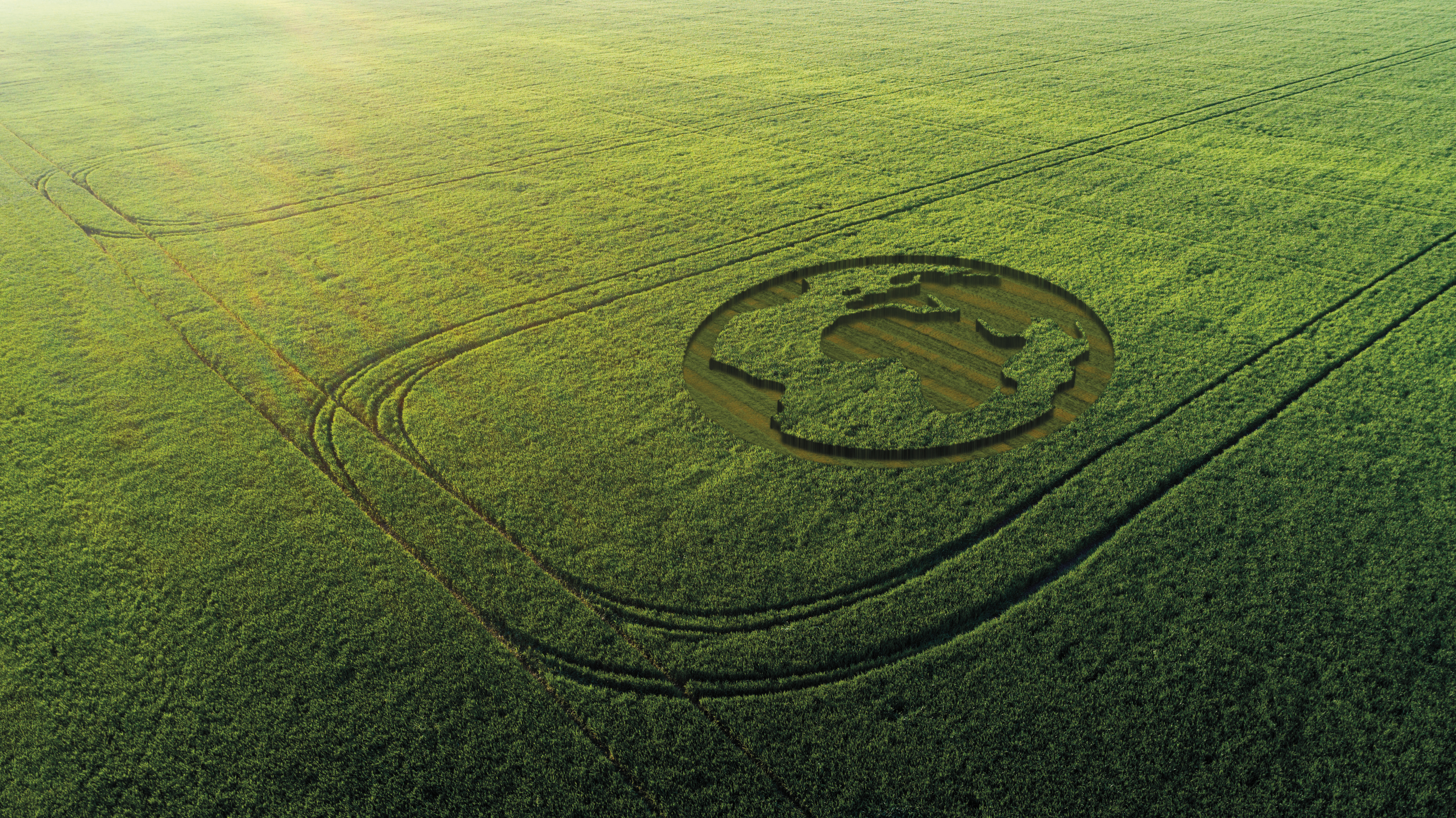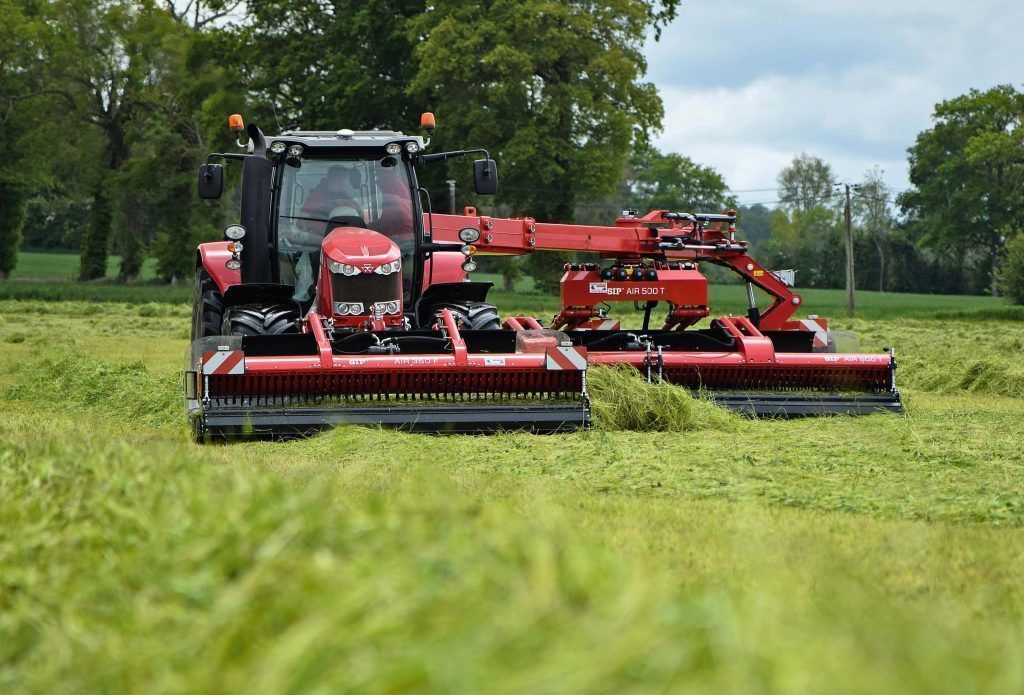Published in Réussir Bovins Viande, 17 April 2023 – By Ludovic Vimond
In Calvados, the David family invested in a SIP pick-up rake to preserve as many leaves as possible in their forage, which partly consists of legumes.
“The pick-up rake is the ideal tool for harvesting all the legumes on our farmland,” says François David, partner at SCL de la Félière. Based in Missy in the Calvados region, SCL is made up of three agricultural holdings EARL and Gaec, owned by brothers François and Frédéric David and their two cousins, Thierry and Richard. The four companies have a contract for 2 580 000 litres of milk and together they farm 590 hectares of grassland and fields. “We started the transition to organic farming on 15 May 2021,” explains François David, “and the process will be completed in a few weeks. From then on, we had to completely overhaul our way of producing forage. Until then, we had been operating without grazing, more on the basis of maize silage. “From 2021, the forage consists of grass silage with a predominance of legumes and maize produced as silage from the crop rotation, which provides the energy value. Around 30 hectares of pasture for dairy cows have been planted around the barn.”
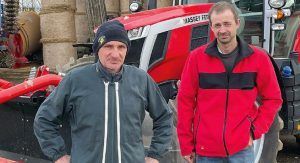
François David, one of the four partners of SCL la Félière (left), and Yohann Supper, one of his employees, appreciate the quality of the technology of the pick-up rake. ©L. Vimond
INCREASING AREAS OF GRASSLAND
This radical change in the way cattle forage is produced has been accompanied by a rethink on mechanization. “The area under grass has increased significantly,” explains François David. “We needed machinery that would give us high working speeds. Above all, they must maintain the quality of the forage, especially the legumes.”
As this forage is intended for silage, they decided to separate mowing from raking, saving 24 to 48 hours of drying time. “The mowing units can also be equipped with belt conveyors at the rear,” says François David. “However, this works well for methanisation, but not for silage forage, because it doesn’t dry enough.”
“If you wait too long before harvesting, the forage turns yellow in the middle of the swath and loses quality,” continues Yohann Supper, one of SCL’s four employees.
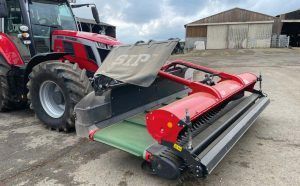
The use of a front pick-up unit prevents driving over the forage. ©L. Vimond
IDEAL FOR HARVESTING ALFALFA
The company, therefore, opted for a mower with a conditioner, followed by a pick-up rake. “Of the 33 kg of seed sown per hectare of our temporary grassland, 11 kg are alfalfa seed and 6 kg clover seed,” says François David. “To avoid losing too many leaves, we opted for a pick-up rake, which mixes the forage less.” This machine also limits the introduction of stones and soil into the forage, he says. So they opted for a pick-up raking combination, with a 3.5-metre unit at the front and a 5-metre AIR trailed model from Slovenian brand SIP at the rear.
“The front pick-up rake ensures that the tractor wheels are not driving over the forage,” says Yohann Supper. Each pass picks up 8.50 metres at a speed of between 12 and 18 km/h, depending on the forage volume. The small diameter of the pick-up unit also makes it easier to pick up smaller grass stalks. “The pick-up is flexible and ensures good ground tracking and thus good picking quality, supported by freely rotating sliders.” In addition, the combination, purchased for €75,000 (excluding VAT), was €20,000 to €25,000 cheaper than competing trailed models with the same working width.
Operating the combination requires minimal knowledge and skills. “You have to coordinate the speed of the belts with the button on the control unit and the speed of the tractor to form nice swaths,” explains Yohann Supper. The speed of the belt is also used to optimise the width of the swath to adapt the drying process to the conditions, while maintaining the width of up to 3 m that silage harvesters have.
HIGH FLEXIBILITY AND WIDE WORKING RANGE
The Yohann Supper rakes the centre swath in one pass for large grass areas, but works back and forth for smaller areas, almost 18 metres. In each case, it picks up every stalk of grass. It works at a speed of 10 to 12 hectares per hour, including turning at the edges of the plots and moving between fields. “It takes six to eight hours to rake the 80 hectares we cut,” explains François David. With a central, telescopic drawbar, the rear rake offers a great deal of flexibility and working configurations, as it can move both left and right and reduce the working width by shortening the drawbar or by making two swaths – one for each unit. In addition, the control system changes the direction of rotation of the hydraulic motor belts, allowing the side of the swath to be changed while maintaining the same rotation speed.
“A 160 hp tractor would be sufficient to drive the system on flat surfaces. There are no major hydraulic requirements,” explains Yohann Supper, “as there is a hydraulic unit on the rear grab that drives both units. But in hilly fields, you need 180 hp to work comfortably.”
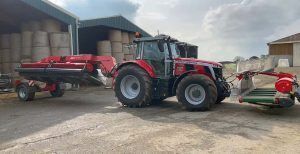
During transport, the rear pick-up unit is folded into a longitudinal position to optimise the width of the machine. ©L. Vimond
USED FOR TURNING STRAW
Last summer, the pick-up rake was also used to turn straw.
“Despite a generally dry summer, we had a rainy spell during the harvest, which soaked the straw that was left behind by the combine harvester in the field,” recalls François David. We attached a 3.5 metre front unit to turn the straw and aerate the swaths, speeding up the drying of the straw.
EIGHT-YEAR ROTATION
With the transition to organic farming, the partners have reviewed their rotation, which is now spread over eight years. “The first four years are temporary grassland, mainly legumes, followed by a year of maize, a year of cereal-protein mixtures (or meslin), a year of maize or rapeseed or sunflower or buckwheat, and again a year of cereal-protein mixtures,” explains François David.
The original article is available here.


